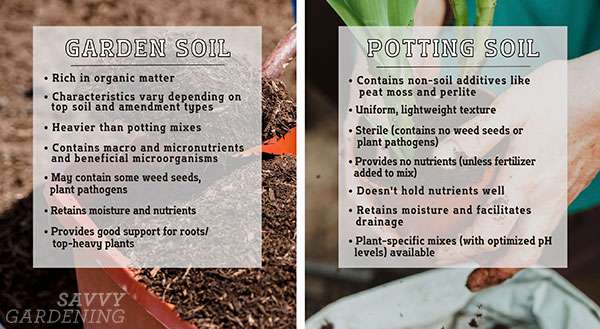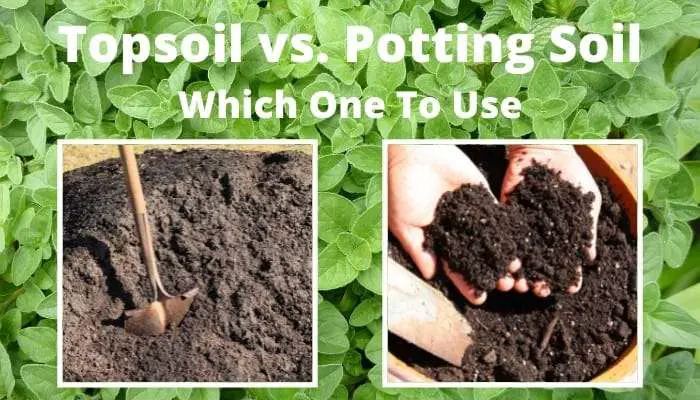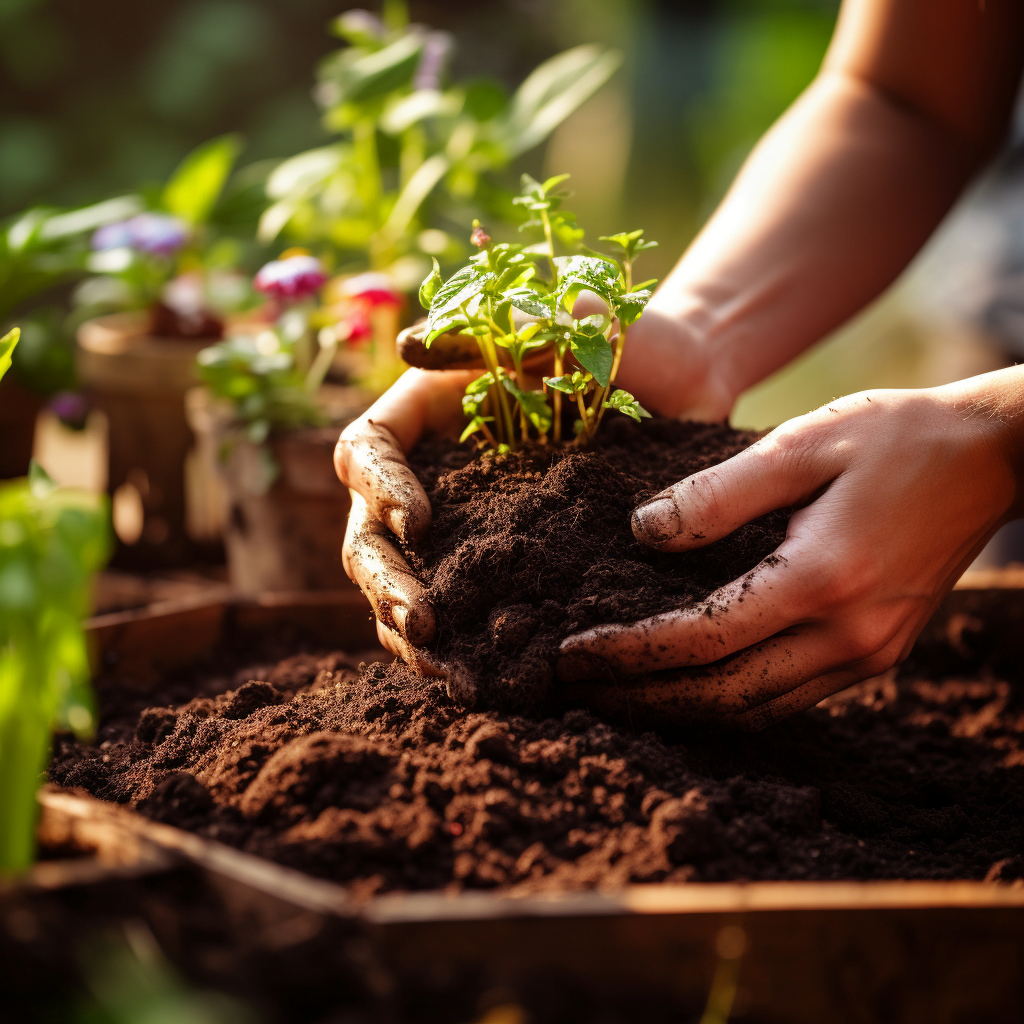In this article, we will be discussing the topic of whether potting soil is better than dirt for gardening. We’ll take a look at off grid living and gardening to give you more context about the subject. So, if you’ve ever wondered which option is best for your plants, stick around and we’ll provide you with some insights and information to help you make an informed decision.
Understanding Potting Soil
When it comes to gardening, one of the most important factors to consider is the type of soil you use. Soil provides the foundation for the growth and nourishment of plants, making it essential to choose the right kind of soil for your gardening needs. Two common options that gardeners often debate about are potting soil and garden soil. In this article, we will delve into the characteristics, benefits, and considerations of both potting soil and garden soil to help you make an informed decision in your gardening endeavors.
Definition and Composition of Potting Soil
Potting soil, also known as potting mix, is specifically designed for container gardening. It is a blend of various organic materials, such as peat moss, coconut coir, compost, and perlite, with the purpose of providing the necessary nutrients, moisture retention, and aeration for potted plants. The composition of potting soil may vary depending on the brand and intended use, but the primary goal is to create a lightweight and well-draining medium that promotes healthy root growth.
Benefits of Using Potting Soil
The use of potting soil in gardening offers several advantages. Firstly, it provides excellent drainage properties, which are essential for container gardening. Excess water can easily drain from the pots, preventing waterlogging and root rot. Additionally, potting soil is formulated to be free from weed seeds and harmful pathogens, minimizing the risk of weeds and plant diseases in your containers. Moreover, potting soil is usually pH balanced, ensuring the optimal pH level for most plants. This allows for better nutrient uptake, resulting in healthier and more productive plants.
Different Types of Potting Soil
There are various types of potting soil available on the market, each catering to specific plant needs and gardening preferences. Some common types include:
- All-Purpose Potting Soil: This is the most versatile option suitable for a wide range of plants, including flowers, vegetables, and herbs. It contains a balanced mix of organic matter and mineral components to provide a suitable environment for most plants.
- Cactus and Succulent Potting Soil: This type of potting soil is specifically designed for plants that require well-draining soil, such as cacti and succulents. It contains a higher proportion of coarse materials like sand or perlite to ensure optimal drainage.
- Orchid Potting Soil: Orchids have unique growing requirements, and therefore, they need a specialized potting mix. Orchid potting soil is usually composed of a mix of bark, sphagnum moss, and perlite to provide proper aeration and moisture retention for these delicate plants.
- Seed Starting Potting Soil: As the name suggests, this type of potting soil is formulated for starting seeds indoors. It has a finer texture and contains a higher proportion of organic matter to provide the nutrients and moisture necessary for seed germination and early growth.
Characteristics of Garden Soil
Definition and Composition of Garden Soil
Garden soil, also known as topsoil, refers to the natural soil found in your garden or yard. It is typically a mixture of organic matter, minerals, water, and air. Garden soil is formed over time through the weathering of rocks and the decomposition of plant and animal matter. Its composition can vary significantly depending on factors such as location, climate, and previous land use.
Advantages and Limitations of Garden Soil
One of the significant advantages of garden soil is its availability. It is readily accessible in most outdoor spaces and does not require any additional purchase or preparation. Garden soil also tends to have a diverse ecosystem of microorganisms, insects, and earthworms, which can contribute to the overall health of the soil and the plants grown in it.
However, garden soil may have certain limitations. It may lack essential nutrients required for optimal plant growth, especially if it has been previously used or depleted. Additionally, garden soil may have poor drainage and aeration properties, leading to waterlogging and root suffocation. It may also contain weed seeds, pests, or harmful pathogens that can adversely affect plant health.
Comparing Potting Soil and Garden Soil
Key Differences between Potting Soil and Garden Soil
The key differences between potting soil and garden soil lie in their composition, intended use, and characteristics. Potting soil is specifically formulated for container gardening and offers excellent drainage, aeration, and nutrient balance. On the other hand, garden soil is the natural soil found in your outdoor space, which may require amendment or additional preparation to meet the specific needs of different plants.
Suitability for Different Gardening Applications
Potting soil is ideal for container gardening, as it provides the necessary support, drainage, and nutrient balance for potted plants. It is lightweight, easy to handle, and can be customized according to the plants being grown. Conversely, garden soil is more suitable for in-ground plantings, where its natural composition can support the growth of various plants, trees, and shrubs. However, it may require amendments and adjustments depending on the specific needs of each plant.
Nutrient Content and pH Level
Potting Soil: Nutrient Content and pH Level
Potting soil typically contains a balanced mixture of essential nutrients required for plant growth. The exact nutrient composition may vary depending on the brand and type of potting soil, but it is designed to provide adequate nutrition for a wide range of plants. Additionally, potting soil is usually pH balanced, with a slightly acidic to neutral pH level (around 6 to 7), which is suitable for most plants.
Garden Soil: Nutrient Content and pH Level
Garden soil’s nutrient content and pH level can vary significantly depending on the location and previous land use. It may contain varying levels of organic matter, minerals, and nutrients. Garden soil may require testing and amendment to ensure it has the appropriate nutrient balance for optimal plant growth. The pH level of garden soil can also vary, ranging from acidic to alkaline, depending on factors such as climate, geology, and vegetation.

Drainage and Moisture Retention
Potting Soil: Drainage and Moisture Retention
Potting soil is designed to have excellent drainage properties, allowing excess water to flow out of the pots easily. This prevents waterlogging and provides oxygen to the roots. However, potting soil also retains moisture to some extent, ensuring that the plants have access to adequate water between watering sessions.
Garden Soil: Drainage and Moisture Retention
The drainage and moisture retention properties of garden soil can vary depending on its composition and structure. Some garden soils may have poor drainage, leading to waterlogged conditions, especially in heavy clay soils. On the other hand, sandy soils tend to drain quickly and may require more frequent watering. Proper soil testing and amendment can improve the drainage and moisture retention characteristics of garden soil.
Weed Control and Disease Prevention
Potting Soil: Weed Control and Disease Prevention
Potting soil is typically formulated to be free from weed seeds, reducing the chances of weeds growing in containers. This can save you time and effort in weed management. Additionally, potting soil goes through sterilization processes during production, minimizing the presence of harmful pathogens and diseases that can affect the plants.
Garden Soil: Weed Control and Disease Prevention
Garden soil may contain weed seeds, pests, and diseases that can harm your plants. Effective weed control in the garden often requires additional measures, such as mulching, hand weeding, or the use of herbicides. Furthermore, garden soil may harbor soil-borne diseases, which can impact the health and productivity of your plants. Proper crop rotation, soil sterilization methods, and the use of disease-resistant plant varieties can help mitigate these issues.

Availability and Cost
Potting Soil: Availability and Cost
Potting soil is widely available at garden centers, nurseries, and online retailers. The cost of potting soil can vary depending on various factors, including the brand, quality, and quantity purchased. However, compared to other gardening supplies, potting soil is generally affordable and can provide good value for your gardening investment.
Garden Soil: Availability and Cost
Garden soil is readily available in most outdoor spaces, requiring no additional purchase cost. However, it may require amendments and adjustments to meet the specific needs of your plants. Amendments such as compost, manure, or mineral supplements can incur additional costs. Depending on the condition of your garden soil, hiring professional soil testing services or investing in soil improvement tools may also contribute to the overall cost.
Usage and Application
Choosing Potting Soil for Container Gardening
When choosing potting soil for container gardening, consider the specific needs of your plants. Select a potting soil type that is suitable for the plant varieties you plan to grow. Some plants may require a faster-draining mix, while others may prefer a moisture-retentive blend. Research the specific requirements of your plants and choose a potting soil that meets those needs. Additionally, consider the size of the containers and the weight of the potting soil, as larger containers may require more soil and heavier pots can be challenging to move.
Using Garden Soil for In-Ground Plantings
When using garden soil for in-ground plantings, it is crucial to assess and improve the quality of your existing soil if necessary. Conduct a soil test to determine the nutrient content and pH level of your garden soil. Based on the test results, you may need to amend the soil with organic matter, such as compost or aged manure, to improve its fertility and structure. Properly prepare the planting area by removing weeds and incorporating amendments into the soil to create a healthy and productive environment for your plants.
Environmental Impact
Potting Soil: Environmental Impact
Potting soil production involves the extraction of materials such as peat moss and perlite, which can have an environmental impact. The extraction of peat moss, in particular, involves the removal of large amounts of carbon-rich material, which contributes to climate change. However, many potting soil manufacturers are now adopting sustainable harvesting practices and alternative materials to reduce their environmental footprint. Look for potting soil brands that prioritize sustainable sourcing and manufacturing processes.
Garden Soil: Environmental Impact
Garden soil can have a positive environmental impact when managed properly. Implementing sustainable gardening practices can improve soil health, conserve water, and enhance biodiversity. These practices include using organic matter, practicing composting, minimizing chemical inputs, conserving water through mulching and efficient irrigation systems, and selecting native plants that support local wildlife. By adopting these practices, you can minimize the environmental impact of your gardening activities and contribute to a healthier ecosystem.
Factors to Consider in Decision Making
Type of Gardening
The type of gardening you plan to undertake plays a significant role in choosing between potting soil and garden soil. If you primarily engage in container gardening, using potting soil would be the most suitable option. On the other hand, if you have a large open space for in-ground planting, garden soil can be a viable choice.
Plant Varieties
Different plants have varying requirements in terms of soil composition, drainage, and nutrient balance. Consider the specific needs of the plants you intend to grow and choose the soil type that best caters to those requirements. Some plants may thrive better in potting soil, while others may prefer the natural composition of garden soil.
Personal Preferences
Your personal preferences and gardening style can also influence your decision. Some gardeners may enjoy the convenience and customization options of potting soil for container gardening. Others may prefer working with the existing garden soil and improving its quality over time. Consider your gardening goals, available resources, and the level of involvement you desire to make an informed decision.
Importance of Soil Testing
Understanding Soil Testing
Soil testing is a crucial step in determining the suitability of your garden or potting soil for plant growth. It involves analyzing the soil’s nutrient content, pH level, and overall quality. Soil testing provides valuable insight into the fertility and health of your soil, allowing you to make informed decisions regarding soil amendments and plant selection.
Benefits of Soil Testing for Gardening
Soil testing for gardening offers numerous benefits. It helps identify nutrient deficiencies or imbalances, enabling you to apply the appropriate amendments and fertilizers to optimize plant health. Additionally, soil testing can reveal pH imbalances, allowing you to adjust the soil’s acidity or alkalinity to suit specific plant requirements. By conducting regular soil tests, you can monitor changes in your soil’s fertility and address any issues before they impact plant growth and productivity.
Tips for Enhancing Soil Quality
Amendments for Potting Soil
If you prefer using potting soil for container gardening, there are several amendments you can consider to enhance its quality. Adding organic matter, such as compost or worm castings, can improve the nutrient content and moisture retention ability of potting soil. Additionally, incorporating perlite or vermiculite can enhance drainage and aeration. Customize the potting mix based on the specific needs of your plants and experiment with different ratios and ingredients to achieve the best results.
Improving Garden Soil
To improve the quality of your garden soil, focus on incorporating organic matter. Compost, aged manure, and leaf mold are excellent sources of organic matter that can enhance soil fertility and structure. Work these amendments into the top layer of soil to provide the necessary nutrients and improve moisture retention. Regularly adding organic matter and practicing proper soil management techniques, such as mulching and crop rotation, can gradually improve the health and productivity of your garden soil.
Conclusion
When it comes to choosing between potting soil and garden soil, there is no definitive answer as to which is better. Both options have their advantages and limitations, and the choice depends on various factors such as gardening style, plant preferences, and specific gardening needs. Potting soil is specifically formulated for container gardening, offering excellent drainage, aeration, and nutrient balance. On the other hand, garden soil is readily available in outdoor spaces but may require amendments and adjustments to meet plant requirements. Soil testing and the use of amendments can help optimize the quality of both potting soil and garden soil, ensuring the best conditions for plant growth. Assess your gardening goals, plant varieties, and available resources to determine the most suitable soil type for your gardening endeavors. Ultimately, the success of your garden lies in choosing and maintaining the right soil that nurtures and supports your plants.




